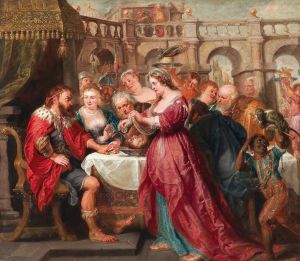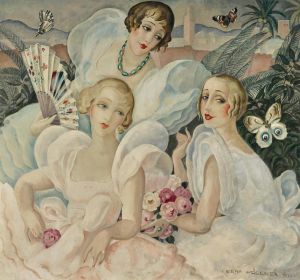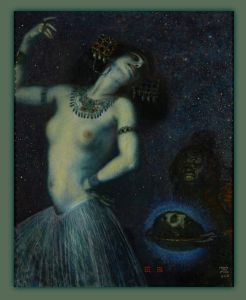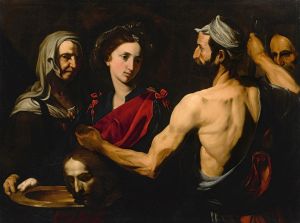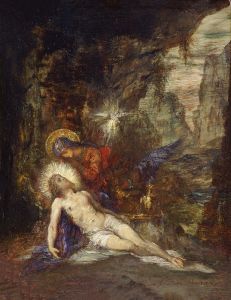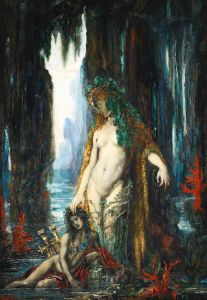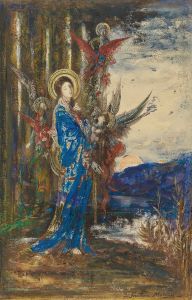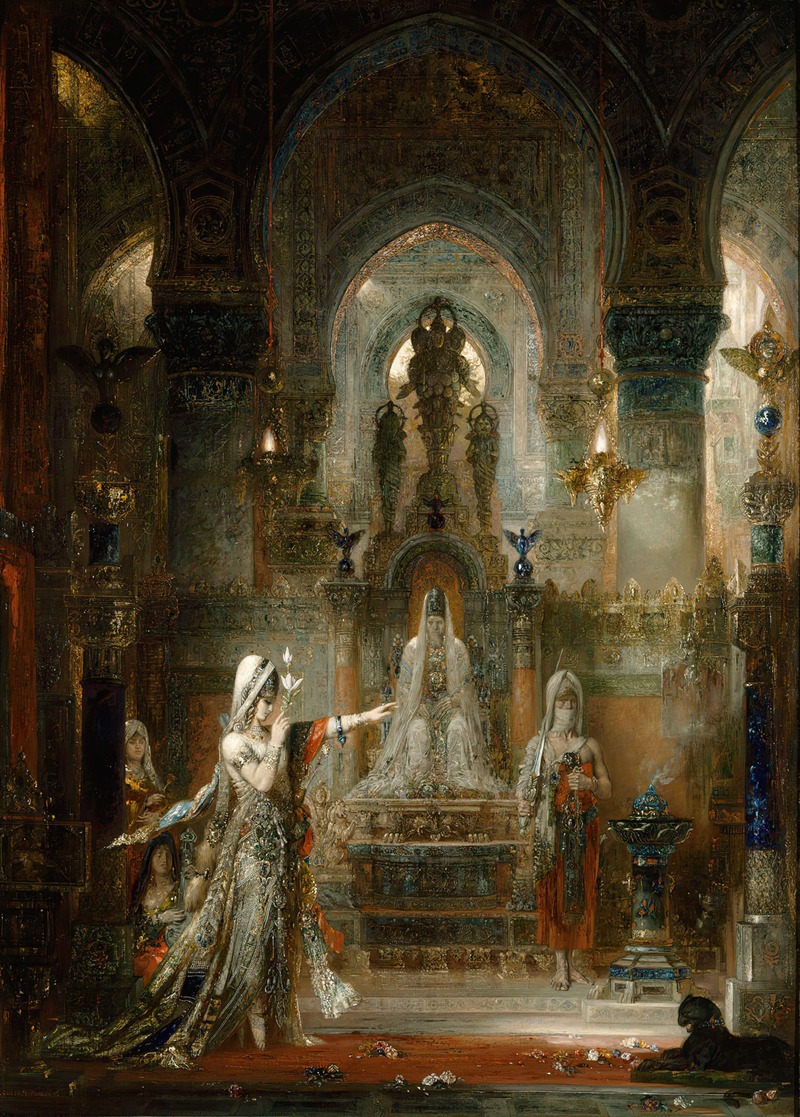
Salomé Dancing before Herod
A hand-painted replica of Gustave Moreau’s masterpiece Salomé Dancing before Herod, meticulously crafted by professional artists to capture the true essence of the original. Each piece is created with museum-quality canvas and rare mineral pigments, carefully painted by experienced artists with delicate brushstrokes and rich, layered colors to perfectly recreate the texture of the original artwork. Unlike machine-printed reproductions, this hand-painted version brings the painting to life, infused with the artist’s emotions and skill in every stroke. Whether for personal collection or home decoration, it instantly elevates the artistic atmosphere of any space.
"Salomé Dancing before Herod" is a renowned painting by the French Symbolist artist Gustave Moreau, completed in 1876. Moreau, known for his intricate and imaginative works, was a pivotal figure in the Symbolist movement, which sought to express ideas and emotions through symbolic imagery and themes. This painting is one of Moreau's most celebrated works and exemplifies his fascination with biblical and mythological subjects.
The painting depicts the biblical story of Salomé, a narrative that has captivated artists for centuries. According to the New Testament, Salomé was the daughter of Herodias and the stepdaughter of Herod Antipas, the ruler of Galilee. The story, as recounted in the Gospels of Matthew and Mark, describes how Salomé danced for Herod on his birthday, pleasing him so much that he promised to grant her any wish. At her mother's behest, Salomé requested the head of John the Baptist on a platter, a demand that Herod reluctantly fulfilled.
In "Salomé Dancing before Herod," Moreau captures the moment of Salomé's dance, a scene imbued with opulence and mystique. The painting is characterized by its elaborate detail and rich use of color, hallmarks of Moreau's style. Salomé is depicted in an ornate costume, adorned with jewels and intricate patterns, reflecting Moreau's interest in exoticism and the decorative arts. Her pose is both graceful and provocative, embodying the allure and danger that the story of Salomé has come to symbolize.
The setting of the painting is equally lavish, with a fantastical palace interior that showcases Moreau's skill in rendering architectural and decorative elements. The background is filled with intricate mosaics, columns, and arches, creating a sense of depth and complexity. Herod is seated on a throne, observing Salomé with a mixture of fascination and foreboding, while other figures in the scene add to the narrative tension.
Moreau's work is notable for its departure from the realism that dominated much of 19th-century art. Instead, he embraced a more imaginative and symbolic approach, using the story of Salomé to explore themes of desire, power, and the interplay between the sacred and the profane. The painting's dreamlike quality and attention to detail invite viewers to linger over its many elements, each contributing to the overall narrative and emotional impact.
"Salomé Dancing before Herod" was first exhibited at the Salon of 1876, where it garnered significant attention and established Moreau's reputation as a leading Symbolist painter. The work is now housed in the Musée Gustave Moreau in Paris, a museum dedicated to the artist's life and oeuvre. This painting, along with Moreau's other works, has influenced numerous artists and writers, contributing to the enduring fascination with the figure of Salomé in art and literature.
In summary, Gustave Moreau's "Salomé Dancing before Herod" is a masterpiece of Symbolist art, celebrated for its intricate detail, rich symbolism, and exploration of timeless themes. Through his unique vision, Moreau has created a work that continues to captivate and inspire audiences, offering a window into the complex interplay of beauty, power, and desire.







